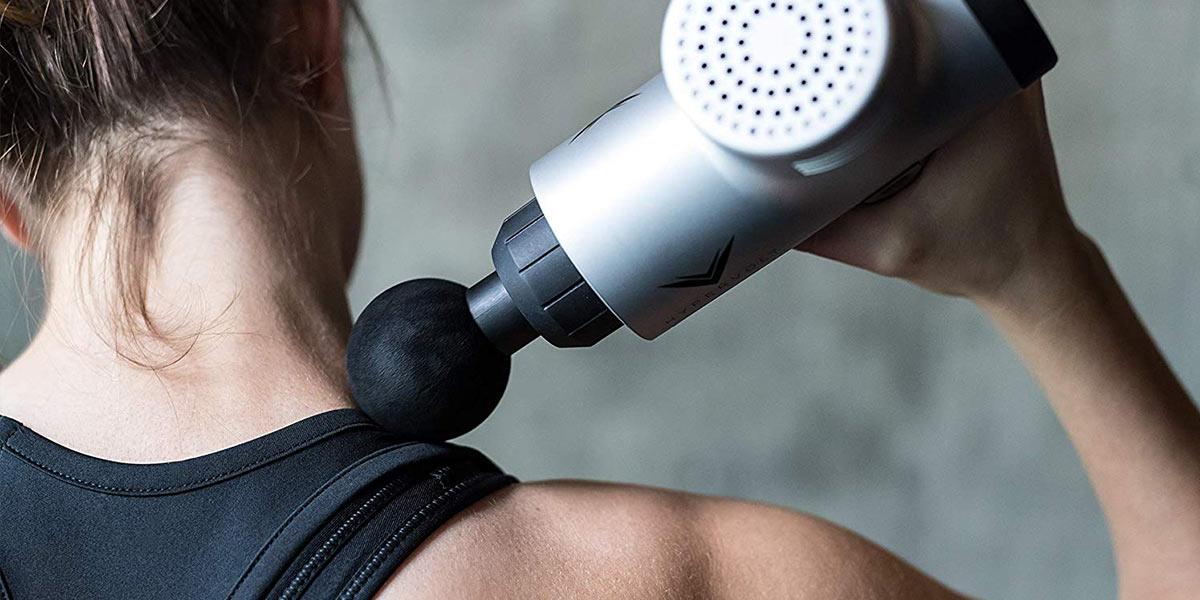
Although physical therapists are quickly becoming big fans of the popular massage guns that are flooding the market, nobody needs special training to use one. They are easy to use, effective, and amazing at providing long lasting pain relief.
The Basics of Percussion Therapy
Using a percussion massage gun is as easy as pulling a trigger. If you’ve ever used a squirt gun, then you have the basic idea of operating most models out there: point and shoot. Percussion therapy is based upon the idea of delivering firm and steady percussion to a problematic area where muscle and connective tissue has bunched up as a result of overuse or other injury. Once any chance of skeletal fracture or other problems that require medical treatment have been ruled out from a painful spot, application of deep, firm tissue massage and heat therapy is a great way to loosen up injured and bunched up tissues, and to provide much needed pain relief (as well as improved range of motion, in many cases).
Tips From A Physical Therapist
A recent publication of “Men’s Health” (Oct 31, 2020) consulted a physical therapist to demonstrate the correct ways to use a massage gun. Focusing on athletic warm ups, she recommended the basic use of a percussion massage gun:
- People tend to stick the massage gun over a painful knot or specific spot when there is pain there. It is better to use the massage gun in a rolling motion across the length of the muscles, instead of focusing in on one spot and staying there, holding the gun in one spot. This will ensure best results for warming up the muscle group, and provide better pain control.
- Although most massage guns go all the way to “10” in intensity, it’s better to start off at very low settings. It’s unlikely that most people will need to actually have a quality massage gun turned up to 10 to get the good and lasting results they need.
- If warming up for a work out, get the best results by standing and doing basic flexion and extension stretches while using the massage gun on key muscle groups. This will prepare the body and warm up the muscles better than staying seated and letting the massage gun do all the work for you.
Other Things To Think About
One basic tip for use is to turn on the massage gun prior to putting it against your skin. If you turn it up too high and already have it pressed on your body, you might actually cause a bruise or an injury. Try to relax the muscles as much as possible during use, avoiding clenching muscles in anticipation of the massage gun. Use the massage gun on the lowest possible setting needed, and “glide” the wand across muscle groups for the best possible end result. While you might feel the need to focus more on an area that hurts you or causes you problems, always remember to navigate the gun away from that spot to get a full body massage at the end of the session. By rubbing, percussing, and warming up all of your muscles, the body will feel better, muscles will be ready for exercise or activity, and the blood will be flowing everywhere.
Although users tend to talk about massage guns eliciting a “good pain”, meaning the areas where they typically have pain, or a knot, hurt a little while the massage gun is working on them – it can be overdone. If pain is experienced, always pause to examine the idea that it isn’t a “good pain”. Make sure that an injury isn’t being made worse by the massage gun in some way, and stop immediately if pain is causing any kind of alarm in your judgement.
How Long Should I Use The Gun?
If you are using the gun on a painful area for pain therapy or to recover an area that is injured, focus on that problem area for up to 2 minutes per session. This can be repeated every couple of hours, but it’s not wise to use it more often than that.
For pre-workout, focus on each muscle group for up to 30 seconds. If muscles need a “re-warm up”, mid-workout, use the massage gun for about 15 seconds per muscle group.
Leave a Reply